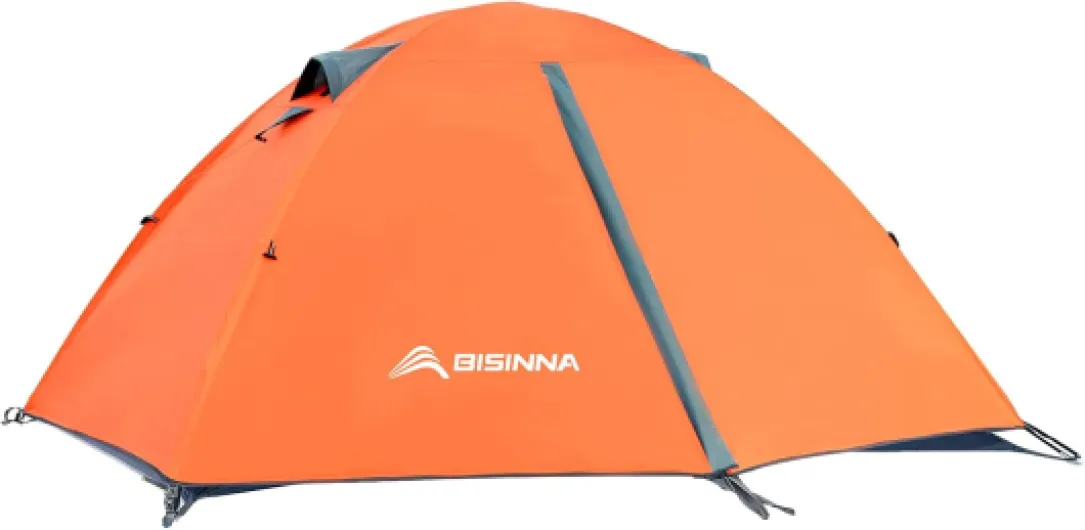Understanding the Appalachian Trail's Terrain
Decoding the Terrain of the Appalachian Trail
When it comes to hiking the Appalachian Trail, understanding the complexity of its terrain is crucial. This trail spans over 2,190 miles across 14 states, presenting a diverse and often challenging landscape. As a hiker, you'll encounter a mix of terrains, ranging from rugged mountain sections to tranquil forest paths, each requiring specific gear considerations.
Despite what some may assume, the trail is not a uniform path. The Appalachian Trail is a mixture of rocky outcrops, dense woodlands, muddy slopes, and occasional water crossings. Therefore, it's pivotal to pack your hiking gear thoughtfully, ensuring each item on your gear list suits these varied conditions.
For instance, season changes bring different challenges. In the summer, the trail becomes lush but also humid and muddy; thus, having a quilt, sleeping bag, pack cover, and lightweight rain gear like rain pants and a rain jacket from brands like Frogg Toggs is essential. It's also wise to consider a durable pack that can efficiently fit your hiking shoes, top layers, and other necessary items.
Trekking poles can be particularly beneficial on steep climbs or slippery descents. They offer stability, help distribute weight, and reduce strain on your joints. Trail runners or hiking boots are vital for ensuring the safety and comfort of your feet, providing the support needed to traverse long distances.
It's also worth noting the necessity for a reliable sleeping pad, which can enhance sleep quality during backpacking. To make an informed backpacking gear list for such adventures, check out this guide on choosing the ultimate backpacking sleeping pad
here. As you prepare, remember that familiarity with the terrain types and seasonal shifts will guide your gear choices effectively, ensuring you tackle the Appalachian Trail with confidence.
Key Features of Ideal Hiking Boots
Features to Elevate Your Hiking Experience
When venturing on the Appalachian Trail, your choice of hiking boots can significantly impact your journey. Each hiker's needs are unique, but there are universal features that contribute to a comfortable and efficient trek. Here's a breakdown of these essential characteristics to help ensure your boots support your adventure effectively.
- Durability and Protection: Traversing rugged terrains demands hiking boots built to last. Look for boots that promise durability, providing robust protection against the unpredictable trail obstacles.
- Water Resistance: Encountering water on the Appalachian Trail is inevitable, whether it's through streams, puddles, or unexpected rain. Quality hiking boots feature water-resistant technology to keep your feet dry, working seamlessly with your rain jacket and frogg toggs.
- Breathability: As much as you need to keep water out, retaining breathability is equally crucial, especially on the sweaty summer hikes. A good boot should ventilate heat, work alongside your base layer, and prevent developing blisters on an extensive journey.
- Traction: Ensure your hiking boots have a reliable grip. Whether you use them with innovative gear items like trekking poles or not, solid traction minimizes slipping on wet or uneven surfaces, enhancing safety while maneuvering through the varying trails.
- Weight: Good hiking boots should be lightweight enough not to burden you yet sturdy enough to offer necessary protection. Consider how they work with your stuff sack, sleeping pad, and other essentials listed in your ultimate backpacking packing list.
These features not only complement your hiking strategy but are indispensable for an elevated hiking experience on the Appalachian Trail. For more comprehensive tips on prepping your journey, check out this guide on
crafting the ultimate backpacking packing list.
Comparing Hiking Boot Materials
The Anatomy of Hiking Boot Materials
One of the critical decisions for any enduring hike, such as the Appalachian Trail, is choosing the right pair of hiking boots. Understanding the diverse materials used in making these boots can influence factors like comfort, durability, and overall performance. Each material brings unique properties that cater to various hiking conditions you'll encounter along the trail.
Leather: The Timeless Choice
Leather hiking boots are renowned for their robust durability and water resistance, ideal for rugged terrain. They are heavier, typically a good choice for colder climates or those who prefer traditional styles. Let's not forget, you're likely carrying a fanny pack or pack cover along with your gear items, and the extra support from leather is invaluable.
Synthetic Materials: Lightweight and Breathable
Synthetic boots, made from materials like nylon or polyester, offer several advantages. They dry faster and are often more breathable than leather, making them a favorite for summer hikes. However, they're usually not as durable or water-resistant. They are compatible with the warm days on the Appalachian Trail when you might prefer wearing rain pants and a frogg toggs rain jacket in your backpacking pack.
Gore-Tex: Weatherproof Essentials
For those seeking water resistance without compromising breathability, Gore-Tex membranes are often considered top-tier. These membranes are woven into boot designs across a range of materials to keep your feet dry, even in challenging rain gear conditions. Whether you're trekking with enlightened equipment or balancing your sleeping bag in a stuff sack, waterproof boots featuring Gore-Tex can be a savior.
For more insights into hiking boots, consider checking the
exploration of Mauis-top hiking trails to understand diverse trail conditions which demand specific footwear choices.
No matter the material, proper fit and sizing (as discussed later) and maintenance practices will ensure longevity and top performance of your hiking boots, making your trail experience more enjoyable.
The Importance of Proper Fit and Sizing
The Role of Fit in Your Hiking Experience
When you're heading out on challenging trails like the Appalachian, the fit of your hiking boots can make or break your journey. A well-fitted boot serves as the foundation for a comfortable and enjoyable hike. Ill-fitting shoes can lead to discomfort, blisters, and even severe injuries over the course of your trek.
- Consider Your Layering: The layers of socks and particular base layers you choose can impact how your boots fit. In cooler climates, you may opt for thicker socks which necessitate a bigger shoe size. Conversely, in summer, lighter materials are preferable.
- Try Them On Later in the Day: Your feet tend to swell throughout the day. Testing the fit during this time can give a more accurate reading of how they will feel as you progress on the trail.
- Room for Toes: Ensure there is enough room in the toe box, allowing you to wiggle your toes. This extra space is crucial when navigating downhill sections of the trail.
- Heel Fit and Ankle Support: A snug heel fit prevents slipping, while good ankle support stabilizes your movements across uneven terrain, reducing the risk of twisting your ankle.
These considerations underscore the importance of paying attention to the fit of your footwear amidst other essential gear items like trekking poles, backpacking packs, or sleeping pads.
Breaking In Your Boots
A successful hike involves breaking in your gear before you step onto the trail. Spend a few weeks walking with your boots. Gradually adapt your feet to them by increasing distances, simulating trail conditions, and adding weight as you achieve comfort.
If you're packing additional hiking gear like sleeping bags or rain gear, adjust and break in your boots with the extra pack weight, simulating what you will experience on the Appalachian Trail.
Paying attention to fit ensures that complications during the hikes are minimized. As part of your preparation, it’s vital to understand not only your boots but how they integrate with the collection of your gear items. After all, proper footgear can mean the difference between an unforgettable adventure and unforgettable misery.
Maintenance Tips for Hiking Boots
Ensuring Longevity with Proper Upkeep
Proper maintenance of hiking boots extends their lifespan, ensuring they remain reliable companions on the Appalachian Trail. This upkeep also significantly contributes to safety and comfort during your hike.
- Cleaning Regularly: After a day on the trail, take a moment to brush off any dirt and debris from your boots. Use a specialized cleaner for tougher stains, but avoid harsh household detergents that might damage the materials.
- Dry Thoroughly: Post-hike, it's crucial to dry your boots completely to prevent odor and deterioration. Remove the insole and stuff a dry cloth or newspaper inside each boot to absorb moisture. Never dry them under direct sunlight or next to a heat source, as it can warp the materials.
- Conditioning: Leather hiking boots might benefit from occasional conditioning to maintain flexibility and water resistance. Ensure to use products suitable for the specific material of your boots.
- Waterproofing: Boost the boots' water resistance by applying a water-repellent treatment. This will reinforce their ability to handle wet trail conditions and keep your feet dry, especially during those unexpected summer downpours.
- Check for Wear and Tear: Routinely inspect your boots for any signs of damage like loose stitching, worn soles, or fraying laces. Early detection allows for timely repairs, preventing more significant issues when you're out on the trail.
Investing time in maintaining your hiking boots is as crucial as selecting the right pair from your gear list. A well-maintained pair of boots, paired with other essential gear items like rain gear and a practical pack, will enhance your backpacking experience and ensure you're well-prepared for whatever challenges the Appalachian Trail presents.
Additional Gear for the Appalachian Trail
Essential Accessories for a Successful Appalachian Trek
Embarking on the Appalachian Trail calls for more than just a reliable pair of hiking boots; ensuring a smooth trek involves packing a well-rounded gear list. To enhance your journey, consider these critical additions to your backpacking ensemble:
- Trekking Poles: As mentioned earlier, the Trail's diverse terrain can be challenging. Trekking poles offer essential support and help prevent fatigue during long hikes.
- Sleeping Arrangements: A comfortable night’s rest can make all the difference. Invest in a quality sleeping bag or quilt from brands like Enlightened Equipment and a reliable sleeping pad. Ensure everything stays compact with a good stuff sack.
- Weather-Ready Clothing: Stick to versatile layering. A reliable base layer, a lightweight rain jacket, such as Frogg Toggs, and rain pants will keep you prepared for sudden weather changes. During summer hikes, prioritize breathable materials.
- Food Storage and Safety: A bear canister is a must-have for safe food storage, protecting both your supplies and wildlife. Consider augmenting your pack with a Sea to Summit bag for supplementary gear.
- Hydration Solutions: Access to clean water is vital. Portable water filters or purification tablets will keep hydration ready, even along the Trail's remote sections.
- Additional Carriers: A fanny pack or a small day bag is perfect for keeping essential items within reach, like a map, snacks, and a compact trash bag for responsible trail management.
- Weather Protection: A pack cover shields your belongings from unexpected showers, whereas trail runners or Black Diamond boots provide excellent footing.
With these additional gear items, you'll possess the readiness to tackle the Appalachian Trail's challenges and enjoy a fuller hiking experience. Ensuring you have the right tools will enhance not just comfort, but safety across your adventure.


